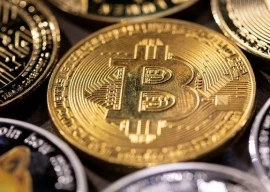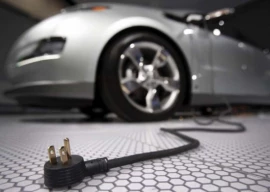
With the change of government in Islamabad, an important question needs to be answered: which of the previous government’s policies will be continued in the same spirit, and which ones will be discontinued altogether?
One of the PPP’s major achievements was jump-starting the process of trade negotiations with India, as a result of which numerous accords and agreements were signed. Unfortunately, though, Pakistan earned a bad reputation by not according India the Most Favoured Nation (MFN) status the former had promised would be granted by December 31, 2013. Nonetheless, trade was initiated on the basis of a negative list approach, although tariffs applied to Indian imports still remain above those promised under the MFN agreement.
Nawaz Sharif’s invitation to Indian Prime Minister Manmohan Singh, requesting the latter’s attendance of Nawaz’s oath-taking ceremony, is a welcome sign of betterment in India-Pakistan relations in the future. While the invitation was politely declined, Singh reciprocated by inviting Sharif to India at a “mutually convenient time” and by sending a personal letter congratulating the Sharif family on their victory in the elections. So far, it seems that both leaders are optimistic and cordial about continuing bilateral negotiations on various issues, including trade.

Both leaders, however, need to realise that the headways made in the past year should not be wasted. In this regard, they need to cement a personal relationship amongst themselves by formally engaging in frequent meetings at various levels of government. While major issues such as the Indus water dispute and the Kashmir conflict may take time and effort to resolve, the low-hanging fruits of bilateral trade should be grabbed with utmost swiftness.
The ball, however, lies in Pakistan’s court. For India, Pakistan represents a negligible export market, as the amount of our neighbour’s annual exports already hover around the $300 billion mark. On the other hand, Pakistan stands to gain much more in comparison if it taps India’s mammoth-sized markets, since Pakistan’s annual exports are at a meagre level of around $20 billion. The gains from bilateral trade are thus heavily tilted in Pakistan’s favour in terms of increased exports. Much has already been said and written about the other gains for Pakistan’s economy, like consumer savings and cheaper production inputs.

It must also be said that India needs to play a strong role in the South Asian region towards vitalising SAARC agreements, since it is the largest and most robust economy in the domain with a sound footprint in global politics and international negotiation forums. While the SAARC agreement stipulates a meeting of the premiers of member nations every year at the SAARC Summit, this has not come to pass for the last two and a half years. India should rise up to the occasion and call a SAARC Summit to address the region’s economic woes and strengthen the cause of regional integration.
While the major western export markets of all SAARC countries go through various economic crises, SAARC’s regional integration seems to have become a necessary prerequisite for the region’s socioeconomic stability. Singh needs to realise that he can leave behind a legacy of empowering the cause of regional integration under the SAARC banner.

While numerous incidents over the past few months could have derailed trade between the two perennially warring neighbours (the firing incident on the Line of Control and the more recent Sarabjit Singh incident come to mind), the silver lining is that business has continued as usual at the Wagah-Attari border. Trade continues and has kept up momentum despite political tensions, proving that there is sufficient demand in both economies for goods from across the border. It is perhaps a welcome sign that, slowly but surely, business is in the process of being divorced from the politics of both countries.
With fingers crossed, one hopes that bilateral trade will open up to its true potential between the two countries and that trade will pave the way for negotiations on other more pressing political conflicts. The trade-for-peace hypothesis might just be the lifeline for the two most important economies of the South Asian region, to reach a logical conclusion in the all-important cause of regional integration in South Asia.
THE WRITER IS A RESEARCH ANALYST FOR INTERNATIONAL TRADE AT THE ECONOMIC GROWTH UNIT OF THE SUSTAINABLE DEVELOPMENT POLICY INSTITUTE
Published in The Express Tribune, May 27th, 2013.
Like Business on Facebook to stay informed and join in the conversation.
COMMENTS (3)
Comments are moderated and generally will be posted if they are on-topic and not abusive.
For more information, please see our Comments FAQ

1725612926-0/Tribune-Pic-(8)1725612926-0-165x106.webp)















@Muhammad Ji : . Pakistan should have similar relations with India as the US has with the UK. . Sir Ji, the UK is the USA's Poodle. . India's Population is Over Six Times as that of Pakistan and India's Economy is over Nine Times as compared to Pakistan. . I do admire your "Panache"! . Cheers
Unfortunately, though, Pakistan earned a bad reputation by not according India the Most Favoured Nation (MFN) status the former had promised would be granted by December 31, 2013.
Fix that to Dec 31, 2012
Pakistan should have similar relations with India as the US has with the UK.